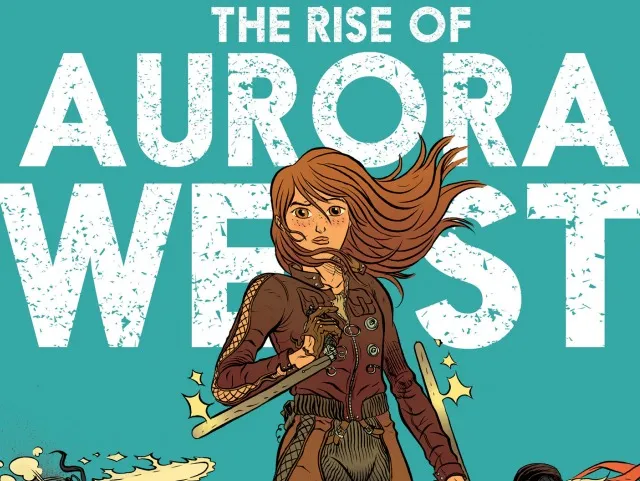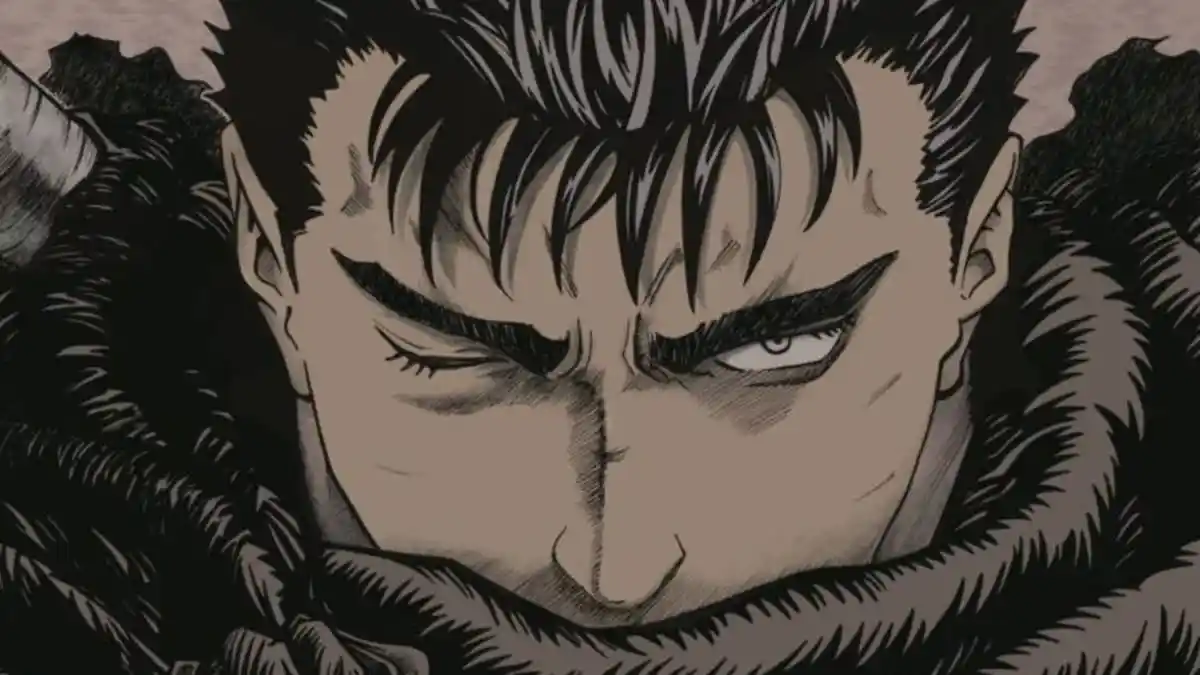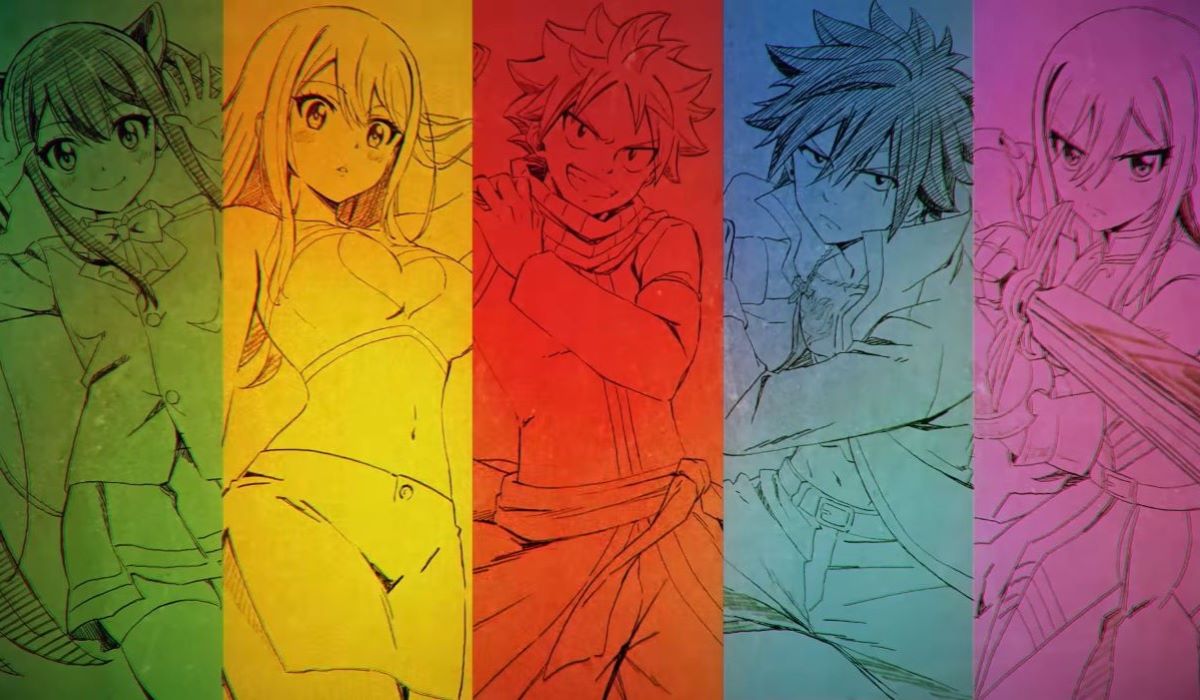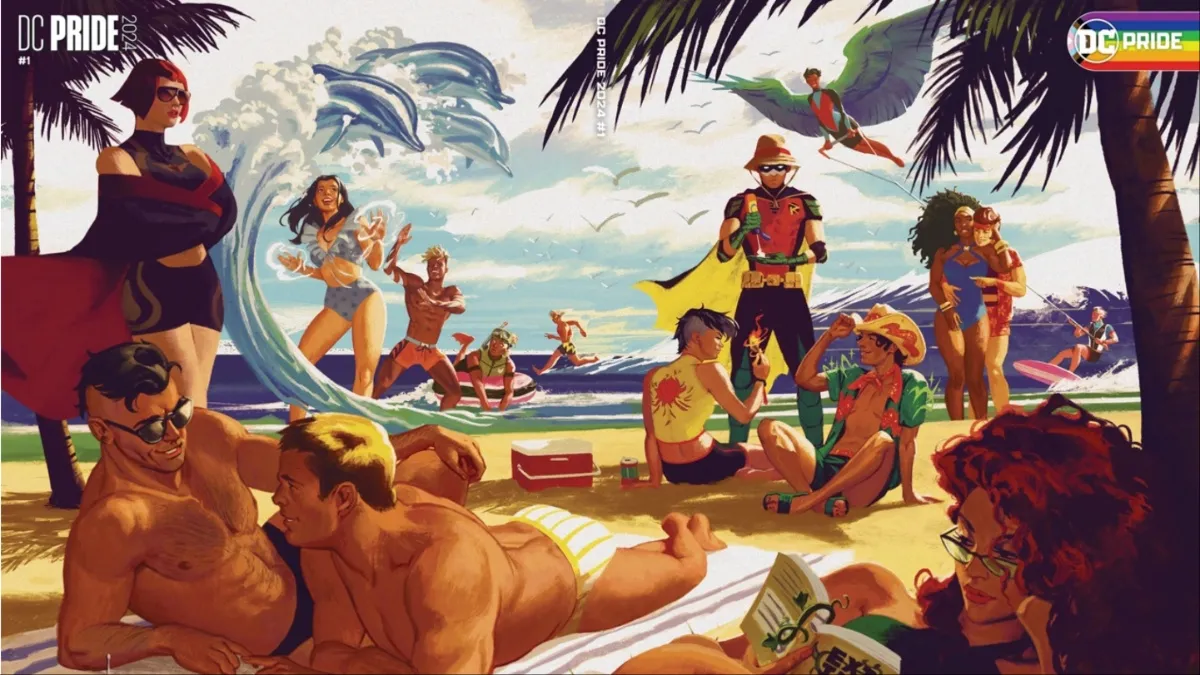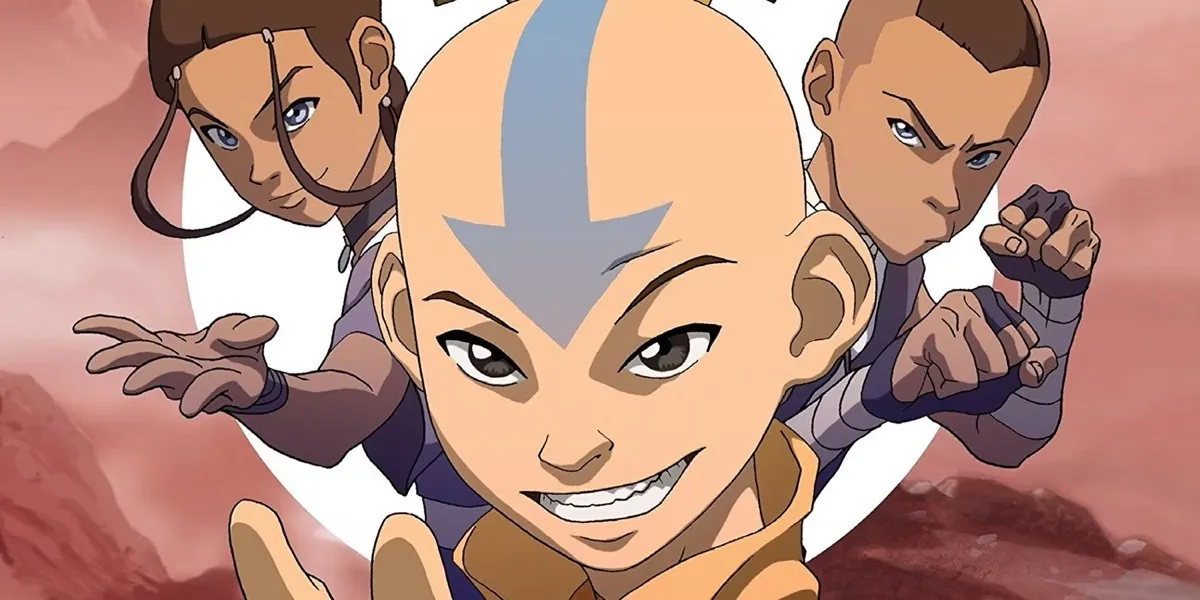Paul Pope’s New York Times best-selling graphic novel Battling Boy followed the adventures of a twelve-year-old demigod, charged with saving the city of Acropolis from an invasion of monsters. After Battling Boy snagged Pope the Eisner for Best Publication for Teens this year—Pope’s third career Eisner—he’s followed up his hit book with a prequel. With The Rise of Aurora West, Battling Boy’s intrepid female science hero partner gets a book of her very own.
The Rise of Aurora West is set in the Battling Boy universe, but years before, telling the story of Aurora came to be such a wicked bad-ass. I got the chance to chat with Pope about his new book (out today!), and to ask him about what makes Aurora such an awesome female comic book character.
Sam Maggs (TMS): First Second sent me over an advance copy of this book, and I just have to say how great it is to see a graphic novel for young people with such an excellent female protagonist.
Paul Pope: I’m really glad people are picking up on the character, too; it’s sort of a surprise. When I created her for the story, I wasn’t intending, you know, cynically, like “I must make a strong female protagonist!” It was just kind of what the story required, as a balance against Battling Boy. Pretty early on, [my publisher was] like “Well, it looks like [Battling Boy] is going to be a hit, so do you have any other ideas?” And instantly, I thought of [Aurora]. I had lots of story ideas for her and her background.
TMS: If [Aurora’s father] Haggard is like a combination of Doc Savage and Indiana Jones, Aurora really felt to me like a heroine who is an excellent combination of Hermione Granger and Batgirl.
Pope: That’s a good call. I wanted to put a lot of psedo-Egyptology in the book, too, I’m into that stuff. The key thing I brought to the table was that Haggard discovers accidentally that there’s another city under [Acropolis]. And there’s a mystery about a mummified boy. It’s cool because in Battling Boy it’s implied that he has other siblings his parents sent to places in need, in crisis, you know; so it seems that this is another Battling Boy, which is kind of neat. I’m not going to give too much away, but that’s pretty much what Battling Boy 2 is about.
TMS: That’s really exciting!
Pope: It’s cool to be seeding these two separate series—when you read all the books together, it’s going to make one big story. But you can also read them separately—you don’t need to read Battling Boy to read Aurora, you know?
TMS: Definitely. What was it about Aurora’s character that you liked so much that drew you to her for the prequel?
Pope: Well, for one thing, the way we structured the story, it tells her entire life history. And it’s a denser read, I think. And [illustrator] David [Rubín], I know that normally his stuff is a little more open because he works in color—and he wanted to color this himself—but it’s going to be manga format, so that changed his art direction. I like the idea that she’s been training to be a hero, and so she’s gradually being given more and more self-responsibility. Haggard is busy, he’s teaching her the best he can, and her trainer Mrs. Grately is kind of like her surrogate mom. It’s an interesting, unconventional family dynamic.
TMS: I agree. What I think is great about this book is you’ve got Aurora as the female lead; Mrs. Grately, her mentor, who is a strong differently-abled woman; and even the villain in this book is female. Was that a conscious choice to create some balance in comics?
Pope: It’s kind of the way the book fleshed itself out. I was telling [co-writer] J. T. [Petty] that there aren’t any female monsters in Battling Boy. Well, there are female monsters, there just weren’t any in the first book. We talked about needing a new villain—Sadisto and Coil are up to their antics, but we needed a Darth Vader, basically. Sadisto is like the bounty hunter, literally, so that was the idea. In that case, we didn’t have a lot of strong art direction for the design of the monsters; David is so good at it, he has his own spin on Sadisto’s gang, and I think he did a great job. When you see them revealed in the book, they’re really terrifying.
TMS: Especially for a middle grade book.
Pope: Yeah, for some kids it’s going to be their first comic book. It’s going to be pretty intense.
TMS: I was thinking that too—I think this book might convince a pre-teen or a teenage girl to pick up a graphic novel where they might not have thought of doing so before.
Pope: Oh for sure! I know that for certain. We’ve gone on tour in a number of different regions—Europe, Canada—in fact, the book launch for Aurora was up at The Beguiling in Toronto.
[pause while Toronto-based TMS-writer Sam and former-Torontonian Pope geek out about Toronto and The Beguiling for a while]
Pope: So we’re going all over the place and meeting a lot of people, especially kids who are, like, eleven and twelve years old. Maybe they’ve read Adventure Time or Harry Potter, but they don’t really read comics and graphic novels. The other cool thing is meeting what they call “problem readers,” kids that don’t read. They tell me, at schools and libraries, that those kids do tend to read graphic novels, because the pictures are such a big part of the page. And that’s really cool, because those are kids who don’t like to read at all. So that’s really exciting.
I would say there’s an equal number of girl fans for Battling Boy—I noticed just empirically from doing the tours and meeting kids in schools. So that was a good feeling—telling girls that the next book is going to be about Aurora, because they have a bunch of questions about her like “Where’s her mom?” and “What happened to Mrs. Grately’s leg?” and “Will Battling Boy and Aurora become a couple?” That kind of thing. So that’s cool. I’m excited.
TMS: It’s wonderful for young girls to have a character they can identify with, and I think David’s art in this book is excellent for that. Was there a specific look the two of you worked on for Aurora and her costume?
Pope: Oh yeah. Her outfit is based on early high-altitude, biplane, laced-up under-armor that pilots would wear. A little World War II, B-52—some people say Rocketeer, because that’s kind of a pulpy character. That wasn’t intentional so much as a re-thinking of a Batman costume. It’s got to be functional.
That’s one of the things I loved the most about working on Batman, was being given the opportunity to re-design his costume, so it still looks like the Batman we know, but I tried to make it more realistic. So we actually see his lace-up boots, and the eyelets on his pants, the wrinkles in the sleeves. That’s something fun and attractive in our comic is costume design. Coil’s design is the same. It’s pretty typical monster stuff; they don’t like to go out in the sun, they stay covered up. They’re like mummy zombies. I imagine they smell bad. It’s really fun to make these really gory monsters that are kind of kid-accessible.
TMS: For sure. Aurora has a bit of a young Jodie Foster vibe to her as well.
Pope: Exactly! You hit it. That’s exactly what we went for. I sent over a whole bunch of pictures of Jodie Foster when she was thirteen and fourteen, when she was doing all those Disney films. It was a little hard at first – David did the most work and art direction on his treatment of Aurora. At first she looked too much like a boy, and then she looked a little too old; she’s approaching fifteen, sixteen. She’s not a woman, she’s not a sex object, so it’s really important that she looks like a girl. Once he saw Jodie Foster, he nailed it.
TMS: You also mentioned that Aurora isn’t a fully-formed hero yet. The book doesn’t shy away from themes like ‘doing the right thing isn’t always easy,’ or the loss of a parent, or the consequences of your choices. It doesn’t talk down to its targeted age group. Was that important to you when creating a middle-grade book?
Pope: Absolutely! Absolutely. The same ethic applied with Battling Boy. Even though Battling Boy is way more sweeping and fast-paced and spacious, it’s a much simpler story. The Battling Boy books take place over about two weeks. With Aurora, we get her entire history, from her childhood. And I really like the way David depicted her memory of her mother; her memory is really not that good for a while, she’s missing elements of her past. I like that because it’s so psychological.
She’s an orphan by the time she’s fifteen; she’s famous; she’s a millionairess; she’s a superhero. You know, that’s, like, a lot. She’s still going to school and in the second Battling Boy book, a lot of the story I’m doing now, it’s really cool because at first she’s kind of a bitch to Battling Boy, because she’s got to learn how to calm down because she’s kind of envious of him. She’s mad. That’s a neat thing to watch as the two of them figure out a way to work together. I think that’s really identifiable.
TMS: I think girls can especially identify with Aurora because she doesn’t only have kick-butt powers, but she’s also a science hero! That’s a great message for girls.
Pope: Yeah! I definitely like that. The follow-up series after Battling Boy is called THB, and it’s a science fiction series with a strong female protagonist character. She’s a bit older; in that book she gets her first kiss, her dad’s an inventor, and she goes to a paramilitary school. I’m really interested in showing education and how young people learn how to figure things out. Those are interesting stories, you know?
Recently, I got a stack of those old Tom Swift books. They’re cringingly dated in terms of race depictions and sexism, but there’s some cool elements. He’s a teenage inventor and adventurer, so I wanted something with that classic mid-century science fiction feel for [Aurora]. And obviously that’s why [these books] look like they’re from pulp. I gave David a stack of films to watch; he watched The Mask of Fu Manchu, which is an old Boris Karloff film; all of the ’30s Universal serials, you know, Flash Gordon; a bunch of the classic German films, Fritz Lang films. He really got it; he really got the monsters down, and I think he really enjoyed delving into this specific, literal pulp fiction.
TMS:: I’ve read that, for Battling Boy, his personality is a combination of yours and your eldest nephew. Who is Aurora? Where did you find the inspiration for her?
Pope: That’s a good question. The character from THB is pretty much my sister when she was a teenager. With Aurora, I didn’t really think about her gender, I just thought about her character type. Certainly I wanted her to be a strong female character, she wasn’t going to be getting nude and taking baths and there weren’t going to be butt shots—you know, all the things you see in stupid comic books.
TMS: Haha, yes, I do.
Pope: I just wanted to treat her as a respectable character who is trying to figure out the mystery of her family.
TMS: That’s great for us to hear around here. Thank you so much!
You can find Battling Boy: The Rise of Aurora West in stores and online as of today from First Second Books!
Are you following The Mary Sue on Twitter, Facebook, Tumblr, Pinterest, & Google +?



